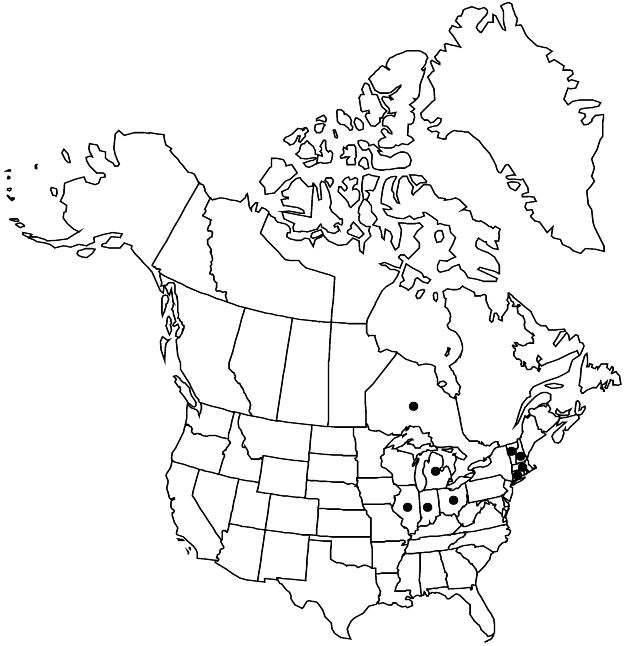Difference between revisions of "Sedum sexangulare"
Sp. Pl. 1: 432. 1753,.
FNA>Volume Importer |
imported>Volume Importer |
||
| (5 intermediate revisions by 2 users not shown) | |||
| Line 5: | Line 5: | ||
|title=Sp. Pl. | |title=Sp. Pl. | ||
|place=1: 432. 1753, | |place=1: 432. 1753, | ||
| + | }} | ||
| + | |special_status={{Treatment/ID/Special_status | ||
| + | |code=I | ||
| + | |label=Introduced | ||
}} | }} | ||
|basionyms= | |basionyms= | ||
| Line 22: | Line 26: | ||
|elevation=0-500 m | |elevation=0-500 m | ||
|distribution=Ont.;Conn.;Ill.;Ind.;Mass.;Mich.;N.H.;Ohio;Vt.;Europe. | |distribution=Ont.;Conn.;Ill.;Ind.;Mass.;Mich.;N.H.;Ohio;Vt.;Europe. | ||
| + | |introduced=true | ||
|discussion=<p><i>Sedum sexangulare</i> was first reported as naturalized in the United States in 1942. The mature carpels have narrow brown lips along the adaxial suture.</p> | |discussion=<p><i>Sedum sexangulare</i> was first reported as naturalized in the United States in 1942. The mature carpels have narrow brown lips along the adaxial suture.</p> | ||
|tables= | |tables= | ||
| Line 31: | Line 36: | ||
-->{{#Taxon: | -->{{#Taxon: | ||
name=Sedum sexangulare | name=Sedum sexangulare | ||
| − | |||
|authority=Linnaeus | |authority=Linnaeus | ||
|rank=species | |rank=species | ||
| Line 46: | Line 50: | ||
|publication title=Sp. Pl. | |publication title=Sp. Pl. | ||
|publication year= | |publication year= | ||
| − | |special status= | + | |special status=Introduced |
| − | |source xml=https:// | + | |source xml=https://bitbucket.org/aafc-mbb/fna-data-curation/src/2e0870ddd59836b60bcf96646a41e87ea5a5943a/coarse_grained_fna_xml/V8/V8_435.xml |
|genus=Sedum | |genus=Sedum | ||
|species=Sedum sexangulare | |species=Sedum sexangulare | ||
Latest revision as of 22:43, 5 November 2020
Herbs, perennial, laxly cespitose, mat-forming, glabrous. Stems ascending, branched, (stoloniferous), not bearing rosettes. Leaves alternate, (densely imbricate on nonflowering shoots), usually in 6 rows (fewer on flowering shoots), ascending, sessile; blade bright green, not glaucous, linear, subterete to terete, 3–6 × 0.8–2 mm, base spurred, not scarious, apex obtuse. Flowering shoots erect, simple or branched, 6–15 cm; leaf blades linear, base spurred; offsets not formed. Inflorescences moderately lax cymes, 5–25-flowered, (1–)2–3(–4)-branched; branches spreading, sometimes forked; bracts similar to leaves, smaller. Pedicels to 0.5 mm. Flowers 5(–6)-merous; sepals erect, distinct, yellowish green, linear-elliptic, unequal, 0.8–1 × 0.4–0.5 mm, apex obtuse; petals spreading, distinct, bright yellow, lanceolate, not carinate, 3–4 mm, apex acute or acuminate; filaments yellow; anthers yellow; nectar scales yellow, square. Carpels divergent in fruit, distinct, dark brown. 2n = 74, 111, 148, 185.
Phenology: Flowering late spring–summer.
Habitat: Roadsides, waste places
Elevation: 0-500 m
Distribution

Introduced; Ont., Conn., Ill., Ind., Mass., Mich., N.H., Ohio, Vt., Europe.
Discussion
Sedum sexangulare was first reported as naturalized in the United States in 1942. The mature carpels have narrow brown lips along the adaxial suture.
Selected References
None.